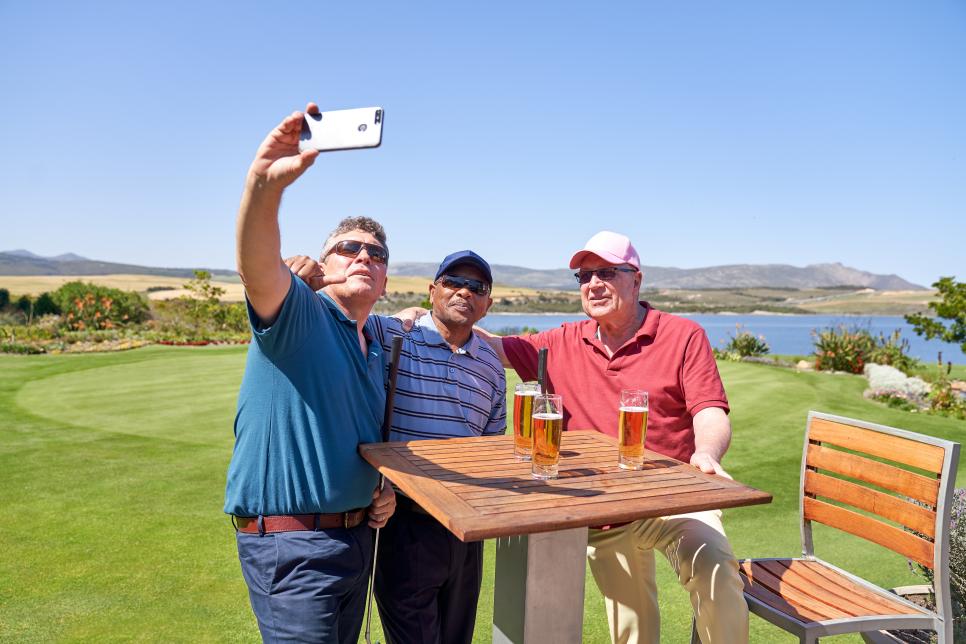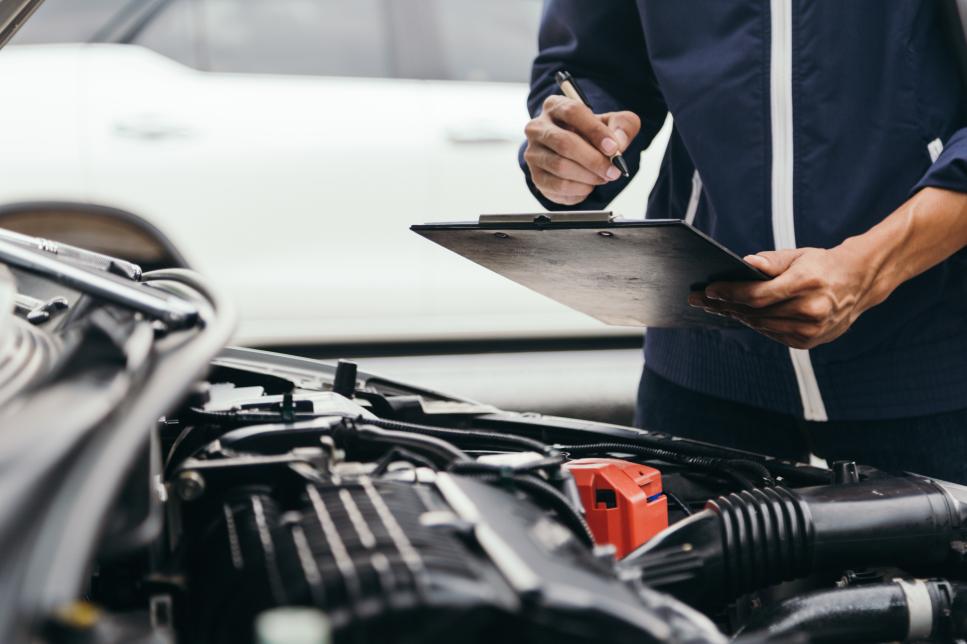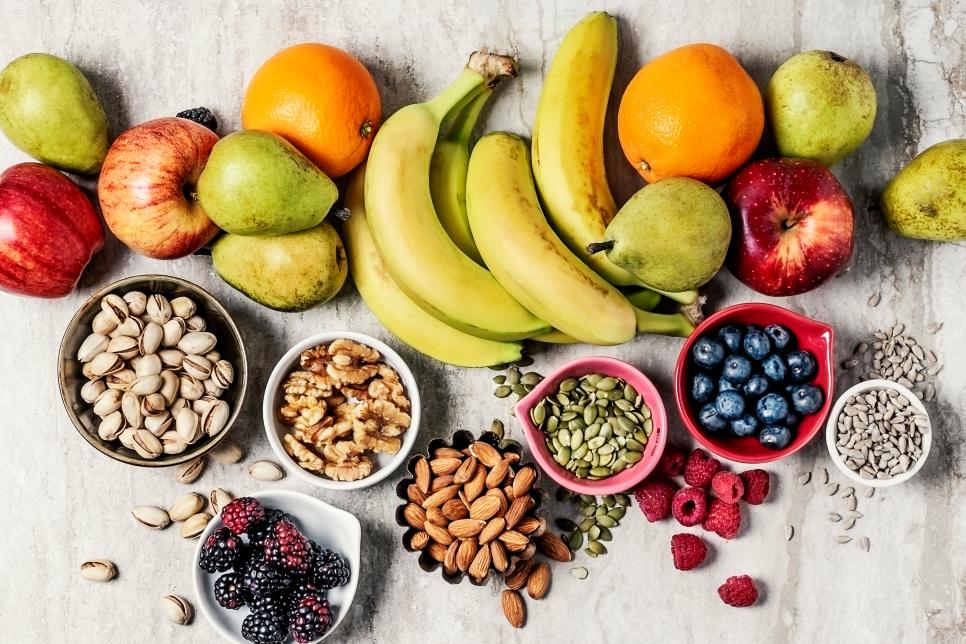A Marathon Not a Sprint
Want to survive a buddies golf trip? Our experts share more than a dozen ways

Caia Image
Buddies golf trips are no joke. On paper, the idea of being in some far-off land playing exotic golf courses by day and closing down pubs by night might sound dreamy, but tell that to your vertebrae six rounds into some boondoggle on the Ring of Kerry. If you think you can hop the next flight to (insert dream destination here) and begin your expedition sans serious prep well, this might be your first (and last) buddies trip, says Dr. Grant Shifflett.
"It's a marathon, so . . . get ready for a marathon," says Shifflett, a spinal surgeon who has a 5.2 Handicap Index, playing out of Shady Canyon Golf Club in Irvine, Calif. "Getting ready for the trip is half the battle."
For those of you with a modicum of prudence, we sought out experts in health and fitness, experts who actually know the game and, in some cases, go on buddies trips themselves. We asked their advice for how to get ready for the journey. The target audience is the 35 to 65 crowd, but their recommendations apply for just about anyone.
GIVE YOUR ENGINES A TUNEUP

A stockphoto
It's always a good idea to get some form of evaluation from a professional before the trip, if only to have peace of mind that everything seems to be in working order before you ask your body to endure more punishment than it's probably used to, says golf-fitness trainer Andrew Dulak.
"Get some form of body work done before the trip—see a massage therapist, a physical therapist, chiropractor, acupuncturist, etc. The point is to get your body moving the best before the trip," says Dulak, a Golf Digest Certified Fitness Trainer.
Adds Shifflett, "Eating right, being well hydrated, doing a physical-therapy program. You want to get loosened up and dialed in for the trip."
FOCUS ON THE LOWER BODY

Image Source
Exercise before a golf trip should put an emphasis on the legs, hips and glutes, experts say. Those are the muscles that are key to avoiding injuries, making repetitively good swings and having the stamina to get through the sluggish rounds on the back end of the trip.
"Walking when you play before the vacation, walking on hilly ground, walking on the treadmill on a steep incline, get your legs ready for all those extra miles," says Mindi Boysen, one of Golf Digest's 50 Best Fitness Trainers in America.
Better hip function also is crucial, says Golf Digest Certified Trainer Cory Ginther, "The hips in this age group are often tight. This includes decreased hip-joint mobility and decreased flexibility of the surrounding soft tissue. For golfers, I want to make sure the hips are moving to decrease risk of hip impingement/labral issues."
Ginther suggests hip mobility exercises with a focus on internal and external rotation in the months/weeks before the trip.
Other areas of the lower body to reactivate are the glutes and hamstrings, adds Paul Gozbekian, another 50 Best Trainer. "Most middle-aged golfers have compression of the posterior hip compartment, which I call 'Burrito Butt.' This can cause an individual to utilize strategies of orientation with their pelvis and spine. Being out of golf shape and sitting on flights for long hours further amplifies these orientation strategies, resulting in golfers over-utilizing lower-back muscles and under-utilizing muscles like the glutes and hamstrings for their setup as well as the swing."
EAT LIKE A CHAMPION

Claudia Totir
At the least, shedding a few pounds before you play will help reduce the increased load you're asking of your joints and lower back, says 50 Best Trainer Jennifer Fleischer. Also consider a diet rich in lean protein to enhance your pre-trip training, Boysen adds.
"Help your foundation for muscle growth and endurance by eating things such as fish, lean beef, nuts, beans, quinoa, etc.," she says.
PACK LIKE YOU'RE GOING OFF THE GRID

HollenderX2
Be prepared for dealing with aches, pains, blisters, spasms, sunburn and dehydration. All of that should be taken into consideration before venturing out.
"Pack the right things," Dulak says. A massage gun, pain medication, ice packs, tape, bandages, electrolyte packs, all of that type of stuff can help you make it through 36 holes on multiple days."
Another thing to consider is your immune system, and its potential for weakening as a result of lengthy airline flights, etc. Boysen says travel with immune boosters such as vitamins and supplements.
Mike Hansen, one of Digest's 50 Best Trainers, says the No. 1 priority before and during the trip is hydration. And not just drinking more water, although that's a big step in the right direction. "You'd be surprised how much just the plane trip can dehydrate you, especially if you're having a few drinks in the air."
And if you're a person who has had back issues in the past, and they tend to flare up as a result of too much golf, it's probably not a bad idea to ask your doctor about traveling with a steroid pack, Shifflett says. The worst thing is to be on your back in the hotel room while your buddies are out enjoying the trip.
ON THE TRIP, GET THE LITTLE THINGS RIGHT

Arctic-Images
Perhaps the biggest thing to remember, says Golf Digest Certified Fitness Trainer Matthew Rosman, is that your caretaking doesn't end the minute you step on the first tee of your trip. You might be tempted to turn into a junior on Spring Break at Daytona Beach, but remember, you're not 21 or even 31 anymore.
Some of his thoughts:
1. Use golf carts or walking push carts to avoid fatigue and loss of stamina.
2. Play some form of team golf vs. rattle-bottom stroke play.
3. Play from a manageable course length. No need to tip it out.
4. Pay attention to hydration and snacks.
5. Go early for the first round and late for the second. Playing back-to-back with a short break is much tougher.
6. Short sessions of stretching, mobility exercises, foam rolling, etc., in between rounds is best.
7. Naps are great. And plenty of sleep between days could be the difference between a great trip and a disaster.
LEARN FROM YOURS (AND OTHERS) MISTAKES

Image Source
Let's say someone on your trip got a little too carried away on the first day: Binge drinking, no sleep, walking and carrying from the back tees, hasn't see a water bottle since the flight. That guy? Well, our experts say it would be wise if he maybe took a round off and hit the reset button the next morning. Or even skipped the first nine and traded it for some extra rest and a healthy breakfast.
"You can still right your wrongs mid-trip," Fleischer says. "When you're sleep deprived and hungover, it's tempting to reach for high carbohydrate foods like pastries and bagels for breakfast. Instead, eat a breakfast that's high in protein and fiber, such as eggs and spinach or grass-fed beef jerky and a piece of fruit if you're on the go.
"The protein and fiber will help balance your blood sugar and keep you satiated longer than high carbohydrate foods, helping to improve your endurance throughout the day."
All of this sounds like a lot of work. And it is. But if you're questioning the seriousness of having to "get in shape" before a big buddies golf trip, you might want to revist the nightmare Golf Digest senior writer Alex Myers went through on his trip a few years back.